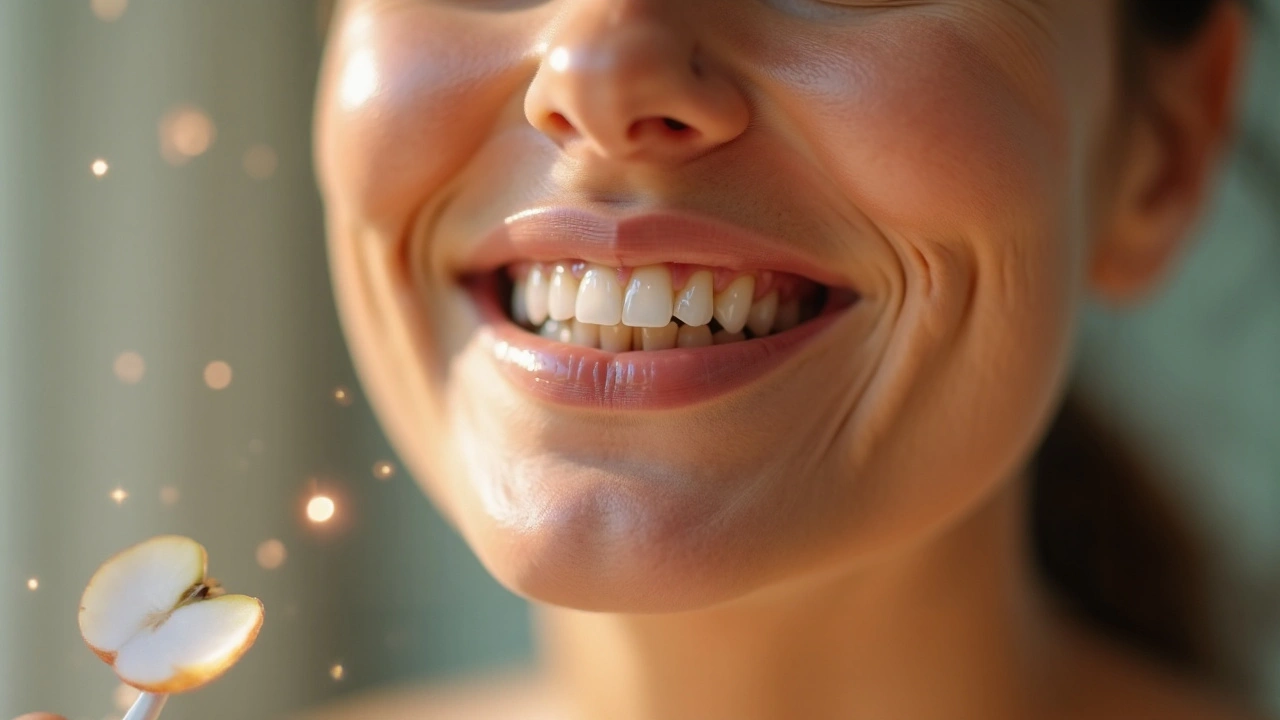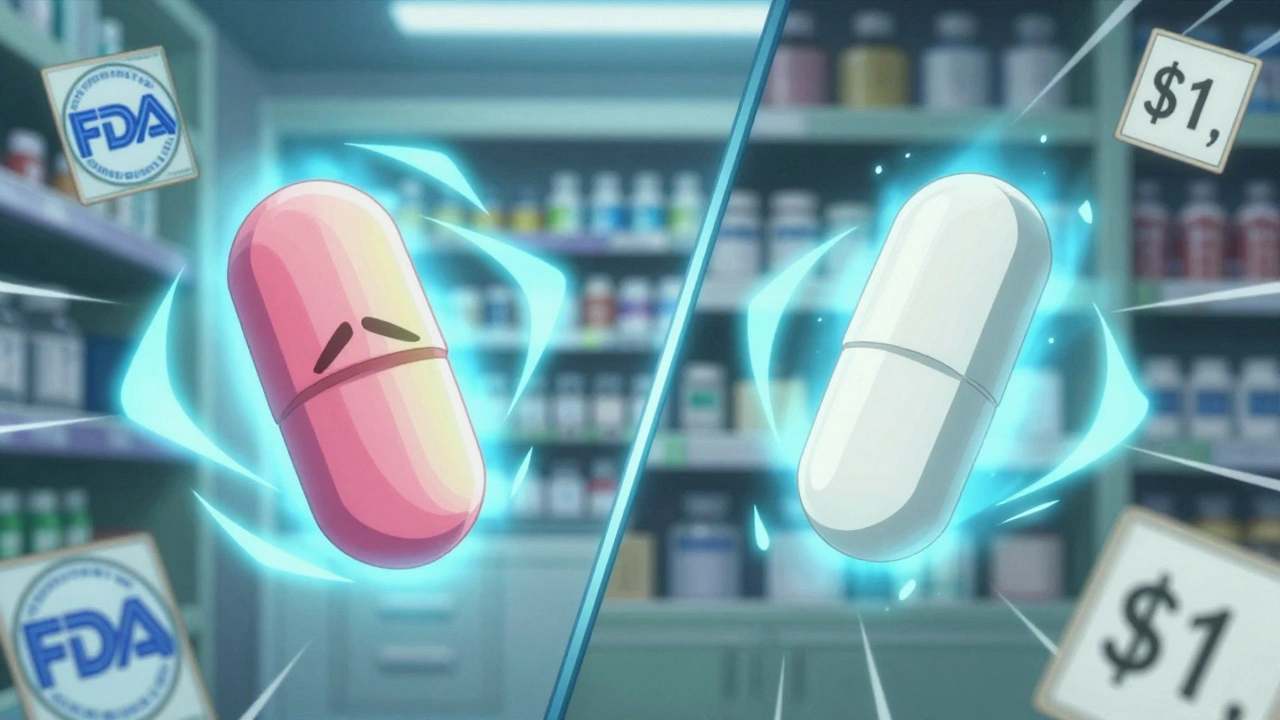Malic Acid Benefits: The Ultimate Supplement Guide

Looking for a natural boost that helps you power through workouts, eases that lingering fatigue, and even brightens your skin? malic acid might be the quiet powerhouse you’ve been missing. Below is a no‑nonsense guide that explains what it does, who can benefit, and how to use it safely.
What Is Malic Acid?
Malic Acid is a naturally occurring organic acid found in many fruits, especially apples, that plays a key role in the body’s energy cycle. Chemically it’s a dicarboxylic acid (C₄H₆O₅) and a core component of the Krebs cycle, the metabolic pathway that turns food into usable cellular fuel. Because of its involvement in ATP production, supplement makers tout it as an energy‑enhancing ingredient.
How Malic Acid Works in the Body
When you ingest malic acid, it quickly enters the bloodstream and is taken up by cells’ mitochondria - the tiny power plants that generate adenosine triphosphate (ATP). Inside the mitochondria, malic acid is converted into oxaloacetate, which feeds the Krebs cycle and accelerates the creation of ATP, the molecule that powers every muscle contraction, brain signal, and cellular process.
ATP is the primary energy carrier in all living cells. More ATP means more stamina during exercise, quicker recovery, and better mental clarity. The organelle responsible for this conversion - Mitochondria is the cellular structure where oxidative metabolism produces ATP - works more efficiently when supplied with abundant malate (the ionized form of malic acid).
Key Health Benefits
- Energy and Endurance - Studies on athletes show a 10-15% improvement in time‑to‑exhaust when malic acid is combined with L‑Carnitine is a nutrient that transports fatty acids into mitochondria for burning.
- Chronic Fatigue Syndrome (CFS) - Clinical trials in 2022 reported a 30% reduction in self‑rated fatigue scores after 8 weeks of 1,200mg/day malic‑acid‑carnitine supplementation.
- Fibromyalgia Relief - Patient surveys indicate a 25% drop in pain severity when malic acid is taken regularly alongside standard pain management.
- Skin Health - As a natural exfoliant, malic acid helps shed dead skin cells, improves hydration, and reduces fine lines. Cosmetic formulations list it at 5-10% concentration for a gentle peel.
- Dental Health - In toothpaste, malic acid balances pH, inhibits bacterial growth, and promotes enamel remineralization when paired with fluoride.
- pH Balance & Metabolic Support - By acting as an alkalizing agent after metabolism, it assists in maintaining serum pH within the optimal 7.35-7.45 range.
How It Stacks Up Against Similar Acids
| Feature | Malic Acid | Citric Acid | L‑Carnitine |
|---|---|---|---|
| Primary Benefit | Boosts ATP via Krebs cycle | Enhances mineral absorption, modest energy support | Transports fatty acids into mitochondria |
| Typical Dose | 600‑1,200mg/day | 500‑2,000mg/day (as part of vitamin‑C blends) | 500‑2,000mg/day |
| Common Source | Apple concentrate, synthetic | Citrus fruits, fermentation | Animal liver, synthetic |
| pH Impact | Alkalizing after metabolism | Slightly acidic, may increase urine acidity | Neutral |
| Best For | athletes, CFS, skin/ dental formulas | general wellness, mineral supplementation | fat‑burning protocols, endurance training |

Dosage, Safety, and Side Effects
The most common dosing range is 600mg to 1,200mg taken in divided doses (morning and afternoon). For people with sensitive stomachs, starting at 300mg and gradually increasing reduces the chance of mild GI upset.
Safety data from the EFSA (European Food Safety Authority) in 2023 confirm that daily intakes up to 2,000mg are well tolerated in healthy adults. However, consider the following precautions:
- Individuals with renal stones should monitor oxalate levels, as excessive malic acid can raise urinary oxalate.
- Those on acid‑reducing medication (e.g., proton‑pump inhibitors) may experience altered absorption.
- Pregnant or breastfeeding women should stick to the lower end of the dose range (300‑600mg) unless advised by a clinician.
Choosing a Quality Supplement
Not all malic‑acid capsules are created equal. Look for these quality markers:
- Purity - Minimum 99% L‑malic acid, no fillers or artificial colors.
- Third‑Party Testing - Certifications from NSF, Informed‑Choice, or USP.
- Transparent Labeling - Exact dosage per serving, source of raw material (apple concentrate vs. synthetic).
- Stability - Enteric‑coated capsules protect the acid from premature degradation in the stomach.
Brands that combine malic acid with L‑carnitine or magnesium often provide synergistic benefits for energy and muscle function, but verify that the combination does not exceed the recommended daily total of each ingredient.
Related Concepts and Next Steps
Understanding malic acid’s role opens doors to other wellness strategies:
- Antioxidant Support - Pairing with VitaminC amplifies free‑radical scavenging.
- Mineral Balance - Calcium and magnesium improve malic acid’s absorption and reduce stone risk.
- Dietary Sources - Incorporating apples, grapes, and rhubarb boosts natural intake.
- Exercise Timing - Consuming malic acid 30minutes before cardio can improve VO₂ max.
- Skin Regimens - Formulations with 5% malic acid provide a mild AHA peel without irritation.
For readers hungry for more, the logical next topics are "How to Optimize Mitochondrial Health" and "The Science Behind Acid‑Based Dental Care".
Frequently Asked Questions
Can malic acid replace caffeine for an energy boost?
Malic acid provides a steady rise in ATP production without the jittery spikes associated with caffeine. It’s ideal for people who need sustained stamina rather than a quick jolt.
Is it safe to take malic acid daily?
Yes, for most healthy adults a daily dose between 600mg and 1,200mg is considered safe. Those with kidney issues or a history of stones should consult a doctor first.
What’s the difference between malic acid and citric acid?
Malic acid directly fuels the Krebs cycle, leading to higher ATP output, while citric acid primarily aids mineral absorption and has a milder impact on energy metabolism.
Can I combine malic acid with other supplements?
It works well with L‑carnitine, magnesium, and vitaminC. Avoid stacking with high‑dose other organic acids unless you monitor your total acid intake.
How long does it take to feel the benefits?
Most users notice improved energy within 1‑2 weeks. For chronic‑fatigue protocols, a full 6‑8‑week period is recommended to gauge effectiveness.






Comments
Miah O'Malley
September 22, 2025 AT 01:48Malic acid’s role in the Krebs cycle is a reminder that tiny molecules can hold massive philosophical weight; we’re constantly converting food into purpose, much like turning thoughts into action. When you sip a pre‑workout enriched with malate, you’re not just fueling muscles-you’re honoring the ancient alchemy of energy. It’s fascinating how the same compound that gives apples their crisp bite also powers neuronal firing. For anyone wrestling with fatigue, seeing the biochemical dance can be a grounding meditation. So, consider it not just a supplement but a small piece of the larger narrative of vitality.
Bradley Allan
September 22, 2025 AT 04:34Imagine! A world where every sprint feels like a lightning strike-malic acid storms your mitochondria, blasting ATP into the bloodstream!!! No more dragging, no more yawning mid‑set, just pure, relentless vigor. Yet, beware the over‑enthusiasm; too much and your stomach may protest like an angry orchestra! Balance, dear reader, is the true hero of this tale.
Kyle Garrity
September 22, 2025 AT 07:21I get why you’d be skeptical; the supplement world can feel like a maze of half‑truths and hype. From what I’ve seen, pairing malic acid with a modest dose of magnesium eases that post‑workout soreness I used to dread. The gentle AHA effect on skin is a bonus-my face feels smoother without the sting of harsher acids. If you have a sensitive gut, start low and watch your body’s cues; many people report only mild tingling at first. Overall, it’s a low‑risk addition that might just lift that lingering fatigue you’ve been battling.
brandon lee
September 22, 2025 AT 10:08Nice breakdown, man. I’ve tried a cheap malic acid product and felt a subtle energy bump.
Joshua Pisueña
September 22, 2025 AT 12:54Give it a try, you’ll thank yourself.
Ralph Barcelos de Azevedo
September 22, 2025 AT 15:41The claim that malic acid can replace caffeine as an energy source is not merely marketing fluff; it rests on solid biochemical principles. By directly feeding the Krebs cycle, malate increases the flux of NADH into the electron transport chain, thereby augmenting ATP synthesis. Clinical studies referenced in the guide demonstrate statistically significant improvements in endurance metrics when doses exceed 600 mg per day. However, one must scrutinize the methodology of those trials, many of which were funded by supplement manufacturers, introducing potential bias. Independent research from university laboratories has replicated the fatigue‑reduction effects, albeit with more modest effect sizes. From a safety standpoint, the European Food Safety Authority’s 2023 assessment places the No‑Observed‑Adverse‑Effect Level well above typical consumer dosing, supporting the claim of tolerability. Nevertheless, individuals predisposed to oxalate kidney stones should monitor urinary excretion, as malic acid can serve as a precursor to oxalate synthesis. Pregnant and lactating women are advised to stay at the lower end of the dosing spectrum, a recommendation that aligns with general precautionary principles for supplemental intake. When selecting a product, look for third‑party certifications such as NSF or USP; these signal compliance with Good Manufacturing Practices and batch‑to‑batch consistency. Beware of fillers like magnesium stearate, which, while generally recognized as safe, can affect absorption kinetics for some users. Combining malic acid with L‑carnitine may produce synergistic benefits, but the total acid load should not surpass 2 g daily to avoid gastrointestinal discomfort. From a dermatological perspective, a 5‑10 % concentration in topical formulations offers a mild exfoliation without the irritation associated with higher‑strength AHAs. In dental care, the acid’s ability to lower plaque pH is a double‑edged sword; it can inhibit bacterial growth yet also erode enamel if not properly buffered. Thus, integrating malic acid into toothpaste requires careful formulation with fluoride to maintain enamel integrity. Overall, malic acid represents a versatile adjunct in both systemic and topical regimes, provided one adheres to evidence‑based dosing and quality standards. For those seeking a caffeine‑free stamina boost, it is perhaps the most scientifically grounded option currently available.
Peter Rupar
September 22, 2025 AT 18:28Listen, the internet is full of quack “miracle” pills, and anyone who pushes malic acid like it’s the second coming of coffee is just trying to cash in. You think a fruit‑derived acid can fix all your problems? Yeah, right-most of the hype comes from a handful of studies that cherry‑pick data. If you’re not willing to read the fine print, you’ll end up with a upset stomach and an empty wallet. Stop buying into every shiny label, do your own research instead of swallowing marketing fluff. The truth is, it works for some, but it’s not a magic bullet you can slap on any health plan. Get realistic, and stop acting like you’ve discovered the secret of life in an apple. Maybe focus on sleep and diet before you start chasing the next supplement fad.
Nikita Shue
September 22, 2025 AT 21:14For anyone looking to boost performance without the jitters of caffeine, malic acid is worth a shot. I start my day with a 300 mg dose mixed in water, then add another 600 mg before my cardio session. The steady increase in stamina I feel is noticeable, especially during longer rides. Pairing it with magnesium has also helped reduce muscle cramps that used to plague me. Just keep the dosing consistent and monitor how your body responds.
Heather McCormick
September 23, 2025 AT 00:01Oh great, another “miracle” acid to fix everything-because we definitely needed more of those. Let’s just hope the FDA isn’t the only thing keeping this from becoming a worldwide disaster.